Your financial statements aside – how can you determine the value of your brand reputation? Through the number of positive reviews you get? Customer lifetime value? The value of your stocks?
The truth is – it’s complicated.
There isn’t a clear-cut formula that would give you an absolute number when measuring brand reputation, but its importance is very much visible in statistics. For example, research from Harvard Business School Working Paper shows that every additional one-star Yelp rating causes an increase in the business revenue of approx. 9%.
? Read Brand Reputation 101: Monitoring, Analysis, and Management Tools
Although there aren’t many physical aspects you can consider while doing the math, there are certain indicators you can monitor through a media monitoring tool to determine if you’re heading in the right direction.
In this blog, we’ll go through some of the media monitoring metrics you should keep your eye on if you’d like to understand and measure your brand reputation better.
Why is Measuring Brand Reputation Important
Brand reputation is the perception that customers, employees, stakeholders, and partners have of a certain brand. Brands are, in this sense, much like human beings. If a person shares the same values, is pleasant to talk to, and makes you feel comfortable, it’s highly likely you’d like to spend your time in their company. The same goes for brands.

A media monitoring tool is your most valuable ally while measuring brand reputation. A single dashboard provides mentions of your brand from all online media, including social media platforms, forums, and review pages. Raw, unfiltered, and honest.
Being aware of what people think of your brand gives you numerous opportunities. Here are some of them.
Read Brand Reputation Management: Top 5 Tips for Success
Adds value to your work
Marketing activities have rather straightforward metrics, and it’s very easy to determine if your efforts are successful or not. You can opt to measure your website traffic, social media reach or conversions. A significant increase in any of these can mean that you’re doing a great job. But looking at these numbers is only half the story. What about the why?
Measuring the impression you leave on your audience adds additional value to this data. You can understand what people truly think, what made them buy or click on your post, and if it’s likely they’d recommend what you’re offering.
Read Online Presence Management: How to Control Your Brand Reputation With Media Monitoring

Helps you react to criticism on time
Nearly 60% of people say that negative reviews make them reluctant to buy from a certain brand. Therefore it is crucial to detect these comments on time and do everything you can to make them right.
Through tracking your brand in media, you can not only react on time, but also amend the situation and provide a solution or an explanation for the problem your customer is facing.
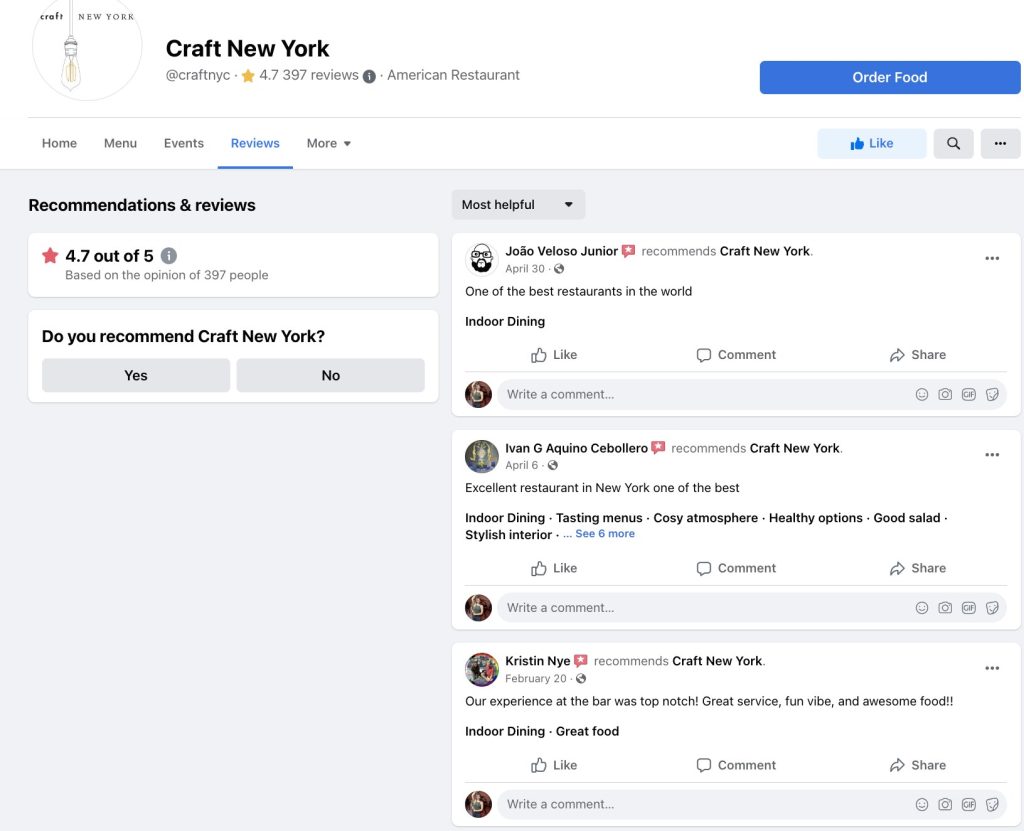
Gets you involved in conversations
The most powerful thing you can do to strengthen your brand reputation is to show that you care. And one of the easiest ways to do it is to get involved in conversations with your customers.
Tracking and measuring brand reputation creates opportunities to talk directly with your customers and find out what they care about. This will add plus points to your brand reputation and help you in steering your marketing and product efforts to your customers’ needs.

Directs your marketing activities
When you work on a new marketing campaign and invest a lot of effort, time, and funds to make it great, it’s difficult to have an unbiased opinion about its quality. But this is where the voice of your customers makes the difference.
Ultimately, what your customers think about your campaigns is the only thing that matters. So listening to their voice can give you a pretty good idea of what works and what doesn’t, or which campaigns were a hit and which were a hit and miss.
Read Managing Online Reputation: 11 Things Agencies Need to Know
Brand Reputation Metrics to Keep Your Eye On
Let’s go through a couple of media monitoring metrics that will help you gain valuable insights into your brand reputation and how it changes over time.
Mentions over time
Whether you’re a new brand or a brand that already exists for a certain period of time, your presence on the market and in various conversations can paint a great image of whether you need to take certain actions. Mentions over time graph shows how many times your brand was mentioned in a specific period.
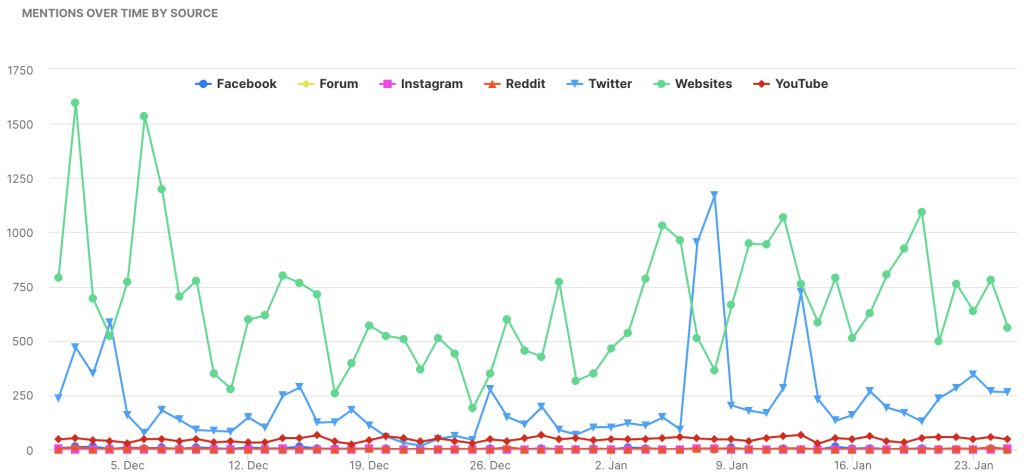
This graph will show if the number of mentions is constant or if it fluctuates. In the latter case, you can easily see what caused the spikes in the number of mentions, whether these spikes signify a crisis or simply a campaign that got a lot of attention and increased your brand awareness to another level.
Read The Benefits of Social Media Integration into Your Sales Funnel
Sources
Sources give an overview of all your brand mentions but divided by a specific source. This means you can see whether you’re mainly mentioned on websites or specific social media platforms (and which ones).
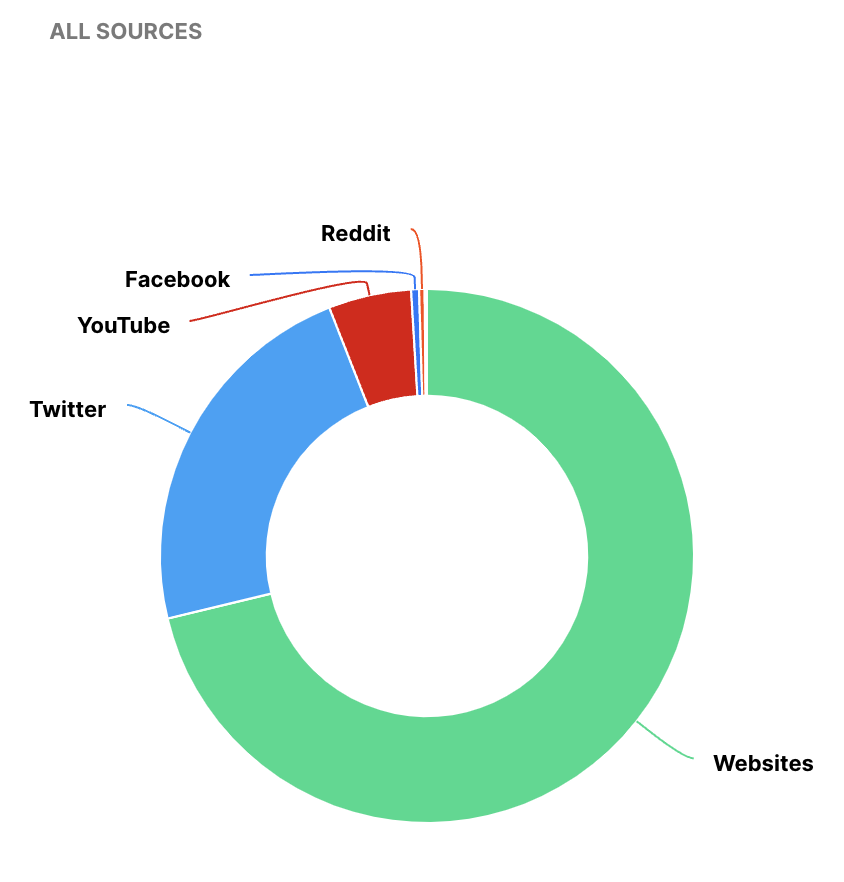
In this way, you can easily identify which medium your customers use the most to talk about your brand. You can use this information further to direct your marketing efforts on those specific channels. And it will save a lot of time and money since you won’t have to spend it on testing various channels.
Sentiment
This is one of the most useful metrics you can track to understand how your customers feel about your brand. Sentiment analysis reveals whether the mentions you’ve gathered are positive, negative, or neutral. It gives an additional perspective to the number of Mentions over time. Many mentions signify that you’re talked about a lot, but the sentiment shows whether it’s in a good or bad way.
If you notice an influx of bad mentions at a specific point, that can be a signal that there is a crisis brewing on a certain channel and that you should implement your crisis communication plan as soon as possible.
Read All You Need to Know About Brand Sentiment Analysis

You can dig a little deeper and check the sentiment across different channels. In this way, you can find out if specific channels positively or negatively influence your brand reputation.
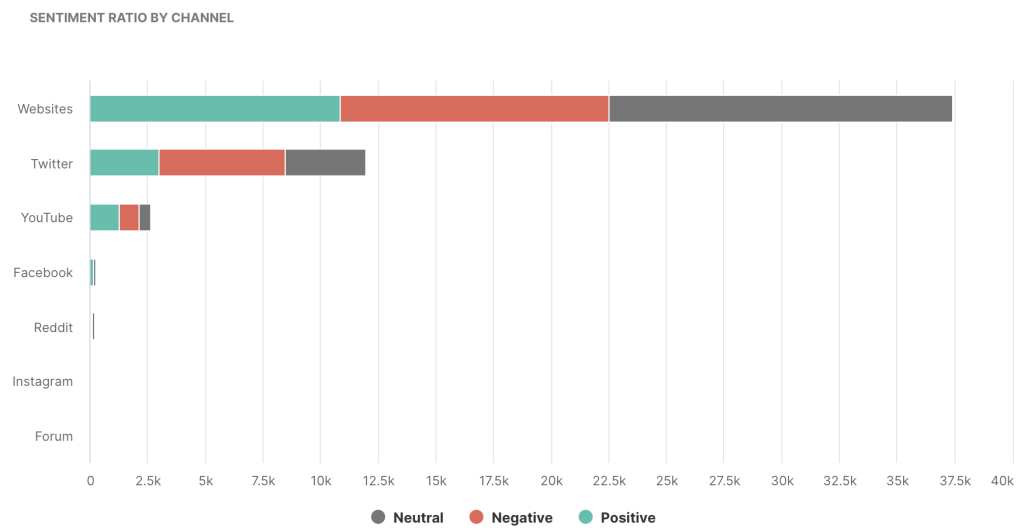
In addition, you can track the sentiment ratio over time. This will help you understand how the sentiment toward your brand changes and if a crisis has caused long-term damage to your brand reputation.
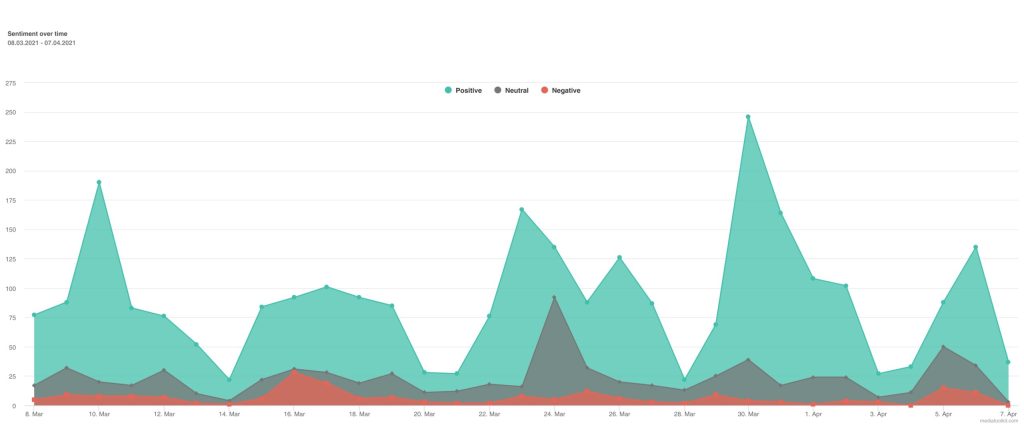
Word Cloud
The word cloud gives you the context of all your brand mentions. In other words, it’s a visual representation of words people usually use alongside your brand name. This can give you a great overview of your brand reputation.
On the one hand, it can be a great source of inspiration for your campaigns, content pieces, website, and social media. On the other hand, you can easily detect if certain negative aspects are connected to your brand or if there are words that you don’t think belong here. In this case, you can use this information to create more campaigns directed toward changing certain aspects that you don’t like.
Influencers
The influencers dashboard provides a list of sources, websites and social media profiles with the highest influence score that are mentioning your brand. This info can be useful if you’re looking into ways to increase your brand awareness. Or you simply have a new campaign on the way that could use additional reach.
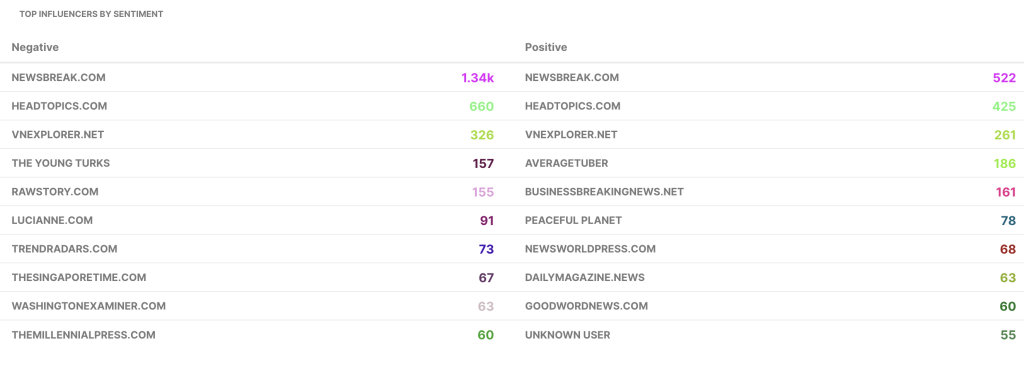
By clicking on any of the listed sources, you can see the exact content in relation to your brand that they are posting. This enables you to react immediately if the content they’re posting doesn’t correspond to what you have in mind. But it also opens up space for new collaborations if you find a name on the list that you weren’t aware of before.
To Conclude
Keeping your brand reputation intact in the world of social media and online reviews is a challenging task. One bad comment flaming on a social media platform can put your whole work to waste. But it can also be a great opportunity to shine bright and turn it into an incredible customer experience story.
Monitoring and measuring brand reputation will help you pinpoint your strengths and weaknesses, turn your efforts in the right direction and ensure you connect with your customers in the way you want to.
Book a demo and see how you can best measure your brand reputation with Determ.



